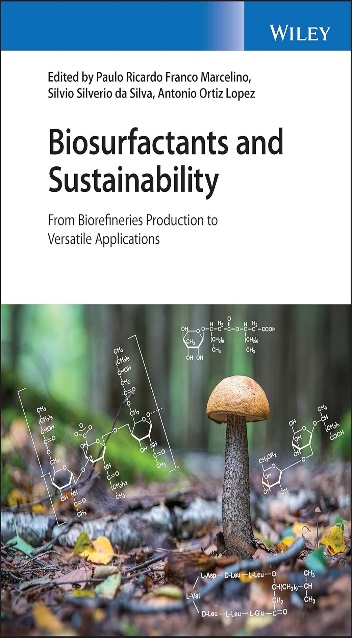
Book
Chemical Calculations
ISBN : 9780367488673
Author : Paul C. Yates
Publisher : CRC Press
Year : 2023
Language : English
Type : Book
Description : Acknowledgements 1 Fundamentals 1.1 Introduction 1.2 Positive and negative numbers 1.2.1 Addition 1.2.2 Subtraction 1.2.3 Multiplication 1.2.4 Division 1.3 Precedence in equations 1.4 Rearranging equations 1.5 Fractions 1.5.1 Identical fractions 1.5.2 Addition and subtraction 1.5.3 Multiplication 1.5.4 Division 1.6 Indices 1.6.1 Multiplication 1.6.2 Division 1.6.3 Raising to a power 1.6.4 Roots 1.6.5 Negative powers 1.7 Standard form Exercises Problems 2 Experimental techniques 2.1 Introduction 2.2 Measurement in chemistry 2.2.1 Decimal places 2.2.2 Significant figures 2.2.3 Combining quantities 2.3 Stoichiometric calculations 2.3.1 Multiplication and division by an integer 2.4 Uncertainty in measurement 2.4.1 Types of uncertainty 2.4.2 Combining uncertainties 2.4.2.1 Determining the maximum possible uncertainty 2.4.2.2 Determining the maximum probable uncertainty 2.4.3 Statistical treatment of uncertainties 2.4.3.1 Statistics using a calculator 2.4.3.2 Statistics using a spreadsheet Exercises Problems 3 Thermodynamics 3.1 Fractions and indices in the equilibrium constant 3.2 Bond enthalpies 3.2.1 Rearranging equations 3.3 The Born-Haber cycle 3.3.1 Combining uncertainties 3.4 Heat capacity 3.4.1 Expansion of brackets 3.4.2 Polynomial expressions 3.4.3 Functions 3.5 Clapeyron equation 3.5.1 Differentiation 3.6 Clausius-Clapeyron equation 3.6.1 Logarithms 3.6.2 The equation of a straight line 3.6.3 Plotting graphs 3.6.4 Plotting graphs using a spreadsheet 3.7 The ideal gas equation 3.7.1 Dimensional analysis 3.7.2 Interconversion of units 3.7.3 Constants and variables 3.7.4 Proportion 3.7.5 Functions of two variables 3.7.6 Partial differentiation 3.7.7 The differential 3.8 The van der Waals equation 3.8.1 Expression of brackets 3.8.2 Combining limits 3.9 Equilibrium constants 3.9.1 Solving quadratic equations using a formula 3.9.2 Solving quadratic equations iteratively Exercises Problems 4 Solution chemistry 4.1 Introduction 4.2 Concentration of solutions 4.2.1 Concentration of a solution 4.2.2 Dilution of a solution 4.3 Activity 4.4 Molality 4.4.1 Proportion 4.5 Raoult’s Law 4.5.1 Straight line graphs 4.5.2 Proportion 4.6 The Debye-Hückel equation 4.6.1 Logarithms 4.7 Ostwald’s dilution law 4.7.1 Discontinuities 4.8 Partial molar volumes 4.8.1 Functions 4.8.2 Stationary points Exercises Problems 5 Kinetics 5.1 Introduction 5.2 Using a rate equation 5.3 Rates of change 5.4 Zero-order reactions 5.4.1 Integration 5.5 First-order reactions 5.5.1 Integration of 1/x 5.5.2 Rules of logarithms 5.6 Second-order reactions 5.6.1 Partial fractions 5.6.2 Differentiation of logarithmic functions and integration of fractions 5.7 The Arrhenius equation 5.7.1 The exponential function 5.7.2 Inverse functions 5.8 The steady state approximation 5.8.1 Simultaneous equations Exercises Problems 6 Structural chemistry 6.1 Introduction 6.2 Packing fractions of atoms in metals 6.3 Arrangement of atoms in crystals 6.3.1 Pythagoras’ theorem 6.3.2 Pythagoras' theorem in three dimensions 6.4 Bragg’s Law 6.4.1 Trigonometry 6.4.2 Inverses of trigonometric functions 6.5 The unit cell 6.5.1 Unit vectors 6.5.2 Addition and subtraction of vectors 6.5.3 Multiplication of vectors 6.6 X-ray diffraction 6.6.1 Complex numbers 6.7 Symmetry operators 6.7.1 Matrices Exercises Problems 7 Quantum mechanics 7.1 Introduction 7.2 Energy level transitions and appropriate precision 7.3 The photon 7.3.1 Mathematical relationships 7.4 Forces between atoms 7.4.1 Proportionality 7.4.2 Stationary points 7.5 Particle in a box 7.5.1 Complex numbers 7.5.2 Sequences 7.5.3 Inverse functions 7.5.4 Differentiation of fractional indices 7.5.5 Use of standard integrals 7.6 The free particle 7.6.1 The complex conjugate 7.6.2 The modulus of a complex number 7.7 The hydrogen atom wavefunction 7.7.1 Differentiation of a product 7.7.2 Integration by parts 7.7.3 Calculus of the exponential function 7.7.4 Multiple integration 7.7.5 Calculus of the trigonometric functions 7.8 The helium atom 7.8.1 Stationary points 7.9 Hückel theory 7.9.1 Determinants Exercises Problems 8 Spectroscopy 8.1 Introduction 8.2 Calculation of dipole moments 8.3 Dipole and quadrupole moments 8.4 Electromagnetic radiation 8.4.1 Direct and inverse proportion 8.5 The Beer-Lambert Law 8.5.1 Rules of logarithms 8.6 Rotational spectroscopy 8.6.1 Sequences 8.7 Vibrational spectroscopy 8.8 Rotation-vibration spectroscopy 8.9 Nuclear magnetic resonance spectroscopy 8.9.1 Pascal’s Triangle 8.10 Fourier transform spectroscopy 8.10.1 Introduction to Fourier transforms Exercises Problems 9 Statistical mechanics 9.1 Introduction 9.2 Molecular energy distributions 9.3 Configurations 9.3.1 Factorials 9.4 The Boltzmann equation 9.4.1 Differentiation of logarithms 9.4.2 Differentiation of products 9.5 The partition function 9.5.1 Integration by substitution 9.5.2 Calculating a series using a spreadsheet Exercises Problems Appendix A Units A.1 Prefixes A.2 Equivalent units Appendix B Physical constants Answers to exercises Answers to problems Chemical index Mathematical index








